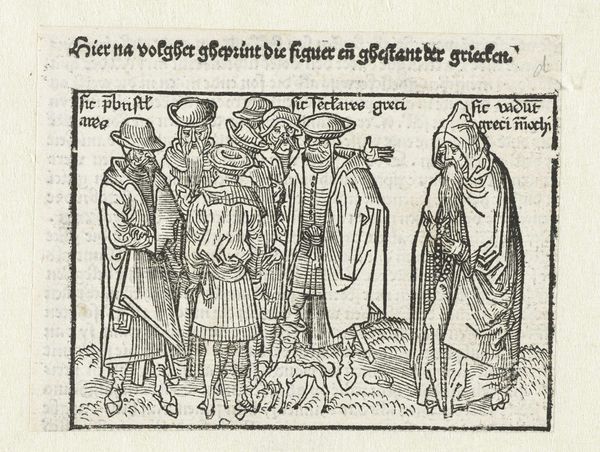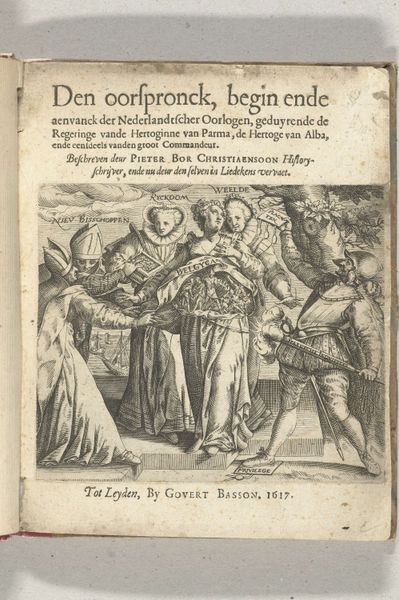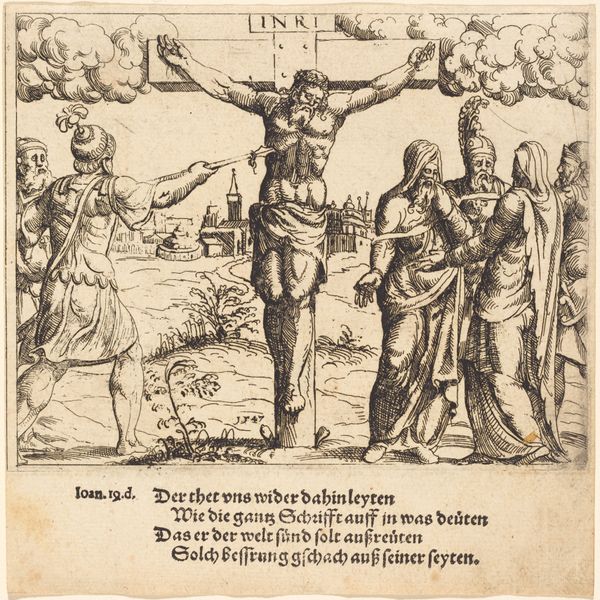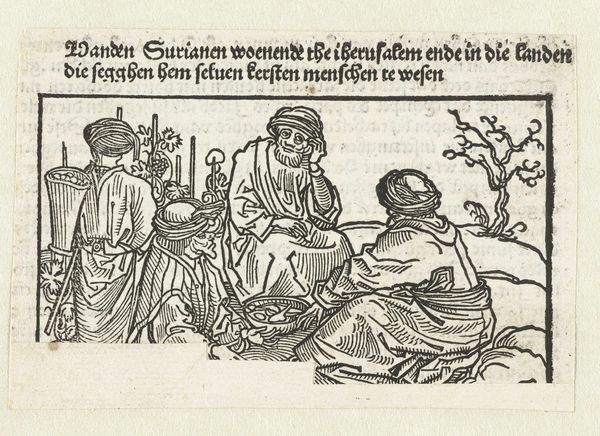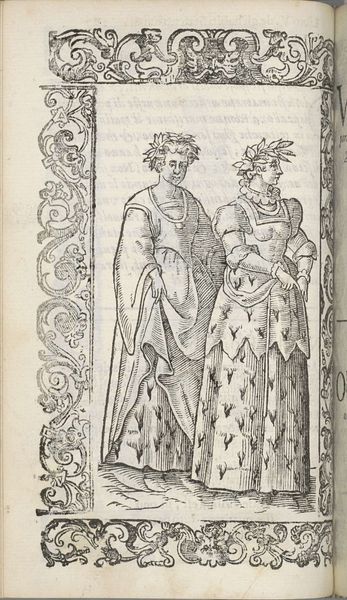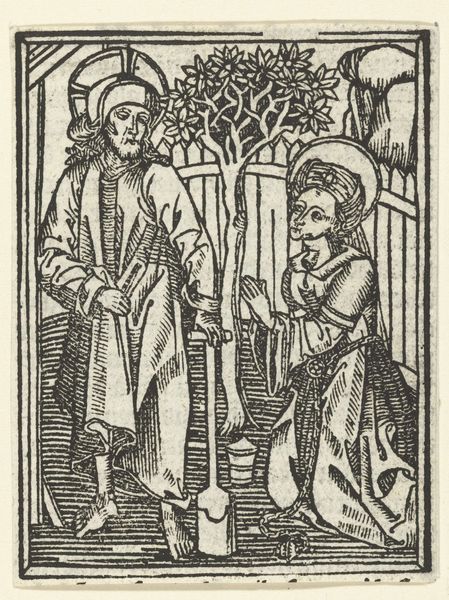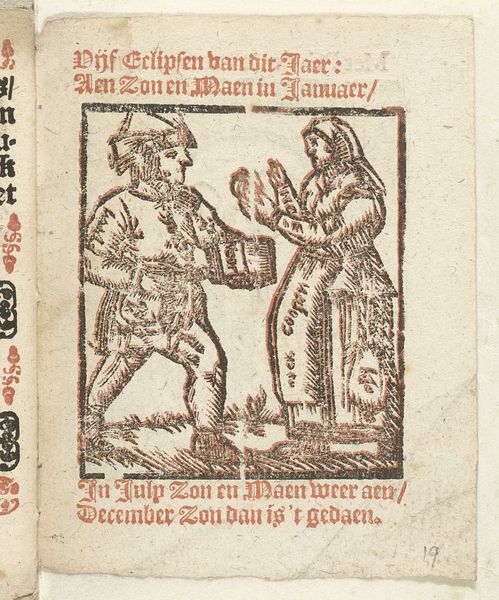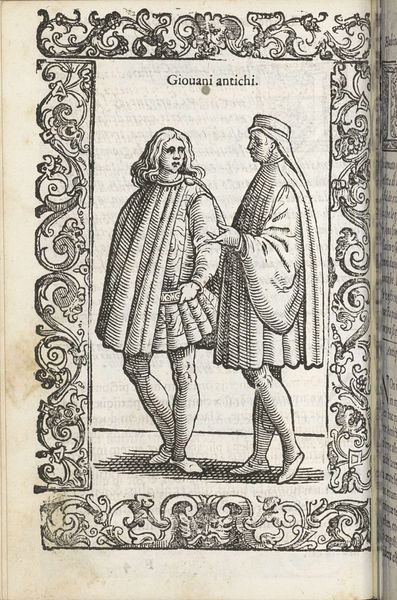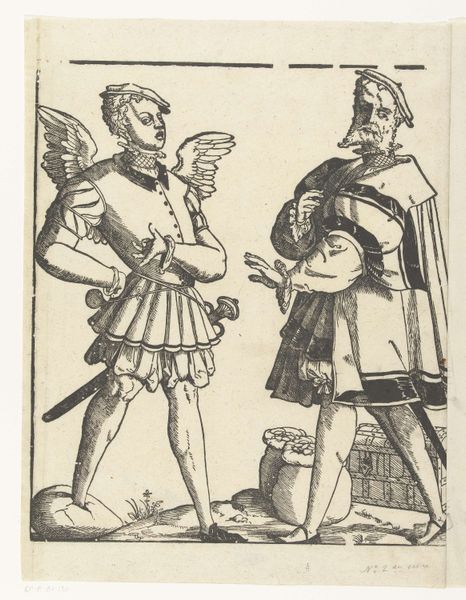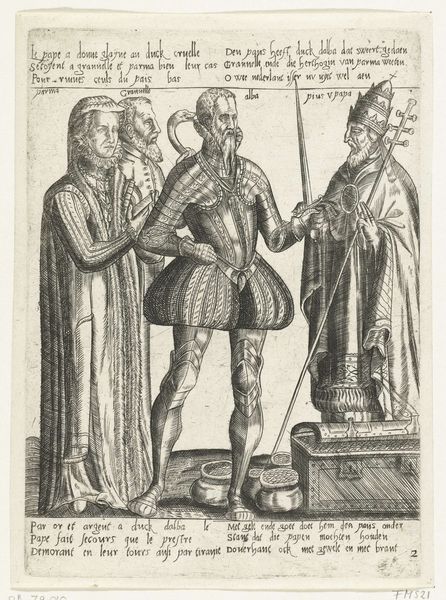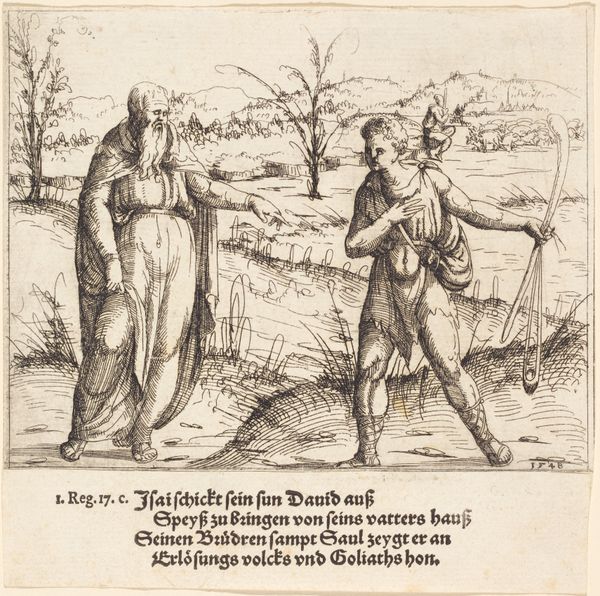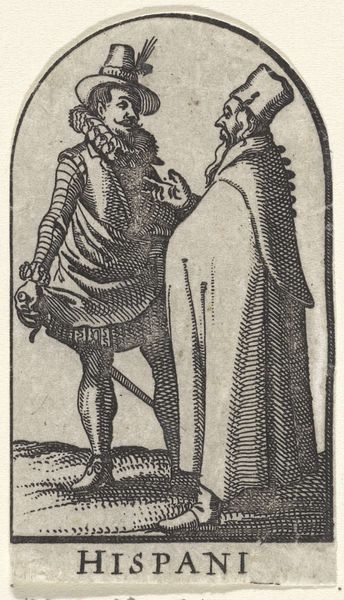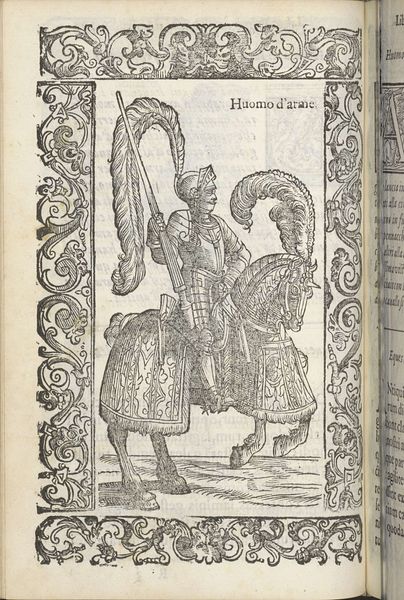
print, woodcut
#
portrait
#
medieval
#
narrative-art
# print
#
woodcut
Dimensions: height 84 mm, width 117 mm, height 92 mm, width 125 mm
Copyright: Rijks Museum: Open Domain
Curator: Erhard Reuwich created this woodcut, "Twee Ethiopiërs," around 1486-1488. Its fascinating to consider the medieval world's emerging view of different cultures and people, presented through this printed image. Editor: My first impression is that despite its small size, it has an incredible depth of texture, achieved by the crosshatching. But why “Ethiopians” when the inscription speaks of the inhabitants of the Indies? Curator: The titles and the imagery reflect the evolving and often confused European understanding of faraway lands during this period. What Europeans conceived of as Ethiopia and what they thought of as India at that time weren’t quite what we understand those terms to mean today. This reflects the narratives of exploration and discovery which, naturally, shaped public understanding. Editor: I’m particularly drawn to the figures' gestures; they're both posed with open hands as if presenting themselves, or perhaps offering something. One holds a curious object in his hand: Do you have any idea what that could symbolize? Curator: Those gestures, though meant to signify openness or a state of being depicted, could have very well been intended as representative of either offering welcome or perhaps soliciting. Their clothing and the object in hand also function as status symbols within a broader social narrative of identity and the "exotic." Editor: You’re right. And the visual language, especially the crosshatching you pointed out, really does underscore this sense of… “otherness” doesn't it? It reminds us of woodcuts depicting biblical figures or moral allegories. Is Reuwich appropriating a well-known visual rhetoric here, using this visual shorthand to indicate far off places and populations? Curator: Precisely. The visual vocabulary plays a significant role in constructing a narrative around these unfamiliar populations. It underscores the tension between observation, fantasy and political intentions inherent in the cultural understanding of the "other." This demonstrates how an image participates in social practices as an apparatus to power and other ideological projects. Editor: It’s so compelling to realize how even something seemingly straightforward like a print, can contain such a rich mix of curiosity and social coding. I find that dichotomy extremely affecting. Curator: Indeed. When we engage with artworks like these, it offers us insight into both history and ourselves and our perception of the historical roots that led to contemporary society and our cultural diversity.
Comments
No comments
Be the first to comment and join the conversation on the ultimate creative platform.
